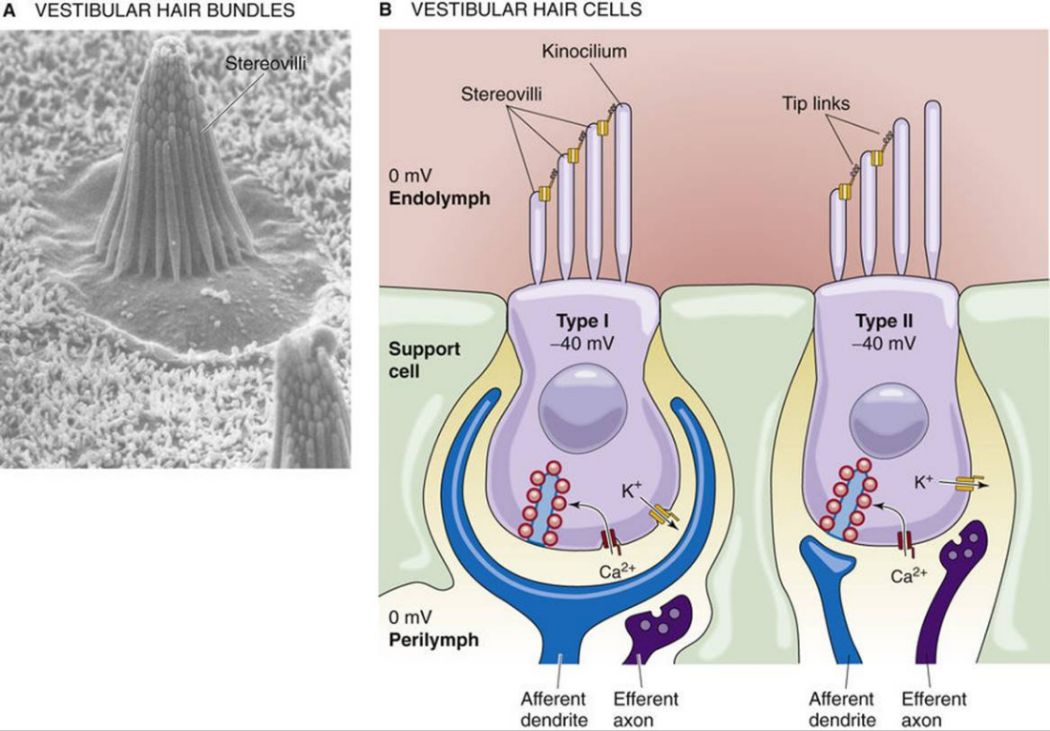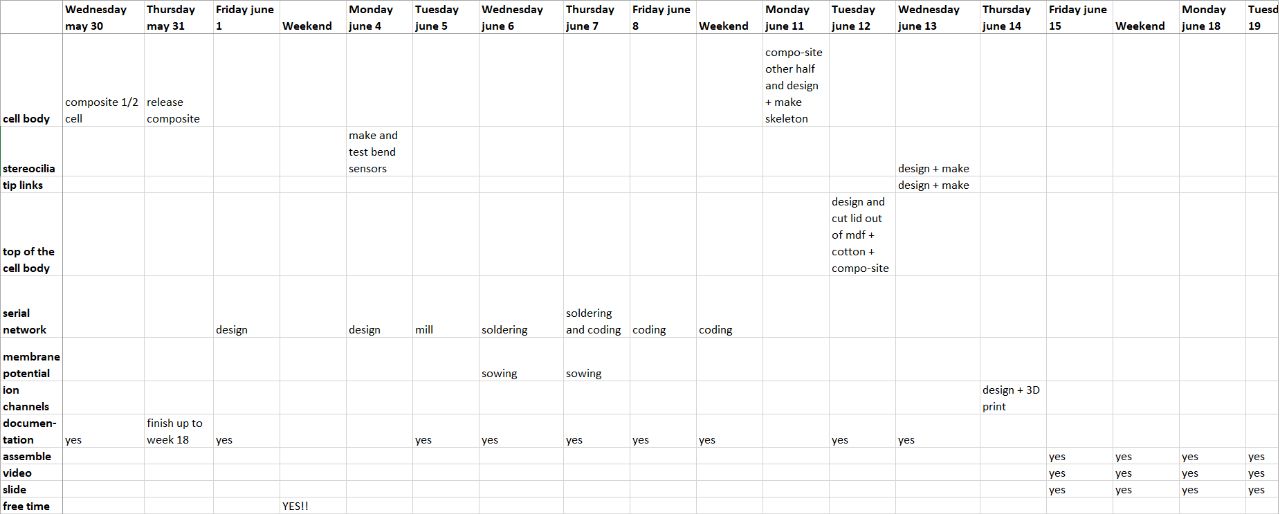Week 18: Applications and Implications

A 3D model of a auditory sensory hair cell
Biology is all around you, so most students and pupils can imagine populations, organisms and organs. But from the cellular level on, things get more and more abstract. But life on the cellular and molecular level is at least as beautifull and amazing as it is on the level of organisms and up. To show this I will make a fysical model of an auditory sensory hair cell.
What will it do?
- If one bends the hairs, the model will show the movement of an action potential over the cell membrane in the form of LED lights lighting up along the surface of the cell body.
- It will be an educational model to help students better understand and appreciate the beauty and complexity of (sensory)cells.
Who has done what beforehand?
Biological models have been used for research and education for centuries. I don't know if Hippocrates and Galenus made drawings, but Vesalius in the 16th century certainly did, like the more famous Michalangelo did a few decades before him. The rich culture of Natural History with people like Linneaus, that gave rise to Biology as a science. Well, I would need a few pages to sum up all the great work that has been done there. I think. Next to drawing, there was conservation. Frederik Ruysch added an educational purpose to his anatomical preparations. For a long time bilogical models where preparations. I guess it must have been the 50ies before we started using plastics. Which also gave Gunter von Hagen the possibility to plastinate. Something I would have loved to do in this course, but wasn't alowed because it does not involve computer aided design.
At the moment there is a huge scope of biological models for education and science. You have plactic torso's and seed plant models that you find in biology class rooms. Biology teachers as well as scientistts make use of video and animation.
But I haven't actually come up with an interactive 3D biological model of a auditory sensory hair cell.
Research on the working mechanism of it has been done extensively all over the world. I do not intent to give an overview of all the reasearch ever done. But a good resource for me has been a page of the Theoretical and Computational Biophysics Group of the University of Illinois-Urbana on the moleculair base of hearing.
On a technical level many many people have done what I will be doing as you will understand in the coming chapters.
Design, Materials and Components and Processes
| Part | Design | Materials and Components |
|---|---|---|
| 1. Cell Body | 3D design a mold and an inner skeleton in Fusion 360 | Foam for the mold, MDF 4mm for the skeleton. Cotton and Epoxy resin for the cell membrane |
| 2. Stereocilia | Either 3D design a mold, use an existing mold like a straw or make them manually. | Bending sensors embedded in silicone stereocilia. |
| 3. Tip links | Finger knit a yarn to embed in the stereocilia | Bending sensors embedded in silicone stereocilia. |
| 4. Top of the cell body | 2D design a lid that holds the stereocilia. | MDF 4mm |
| 5. Serial Network | Design a serial network using Eagle | Copper plates and electronic components |
| 6. Changing cell membrane potential | Design LED buttons and sow them on an elastic band that can be mounted on the inner cell skeleton and connected to the network. | Copper plate, 120 LEDs, conductive wire, elastic band. |
| 7. Ion channels | 3D design model of ion (Potassium)channels to embed in the hairs. 3D Design model of Calcium ion channels to glue on the cell membrane. | 3D printer filament |
Resources
| Materials and Components | Coming from | Costs |
|---|---|---|
| Foam 10cm | FabLab De Waag | 22,39/120x60cm and 3,11/cell body mold |
| MDF 3mm | FabLab De Waag | +/- 3 euro's |
| Cotton | A. Boeken | 5,95/m |
| Tarbender epoxy coating | Smooth On from FormX Amsterdam | 114,85/5,13 kg and 6,25/cell body |
| Bending Sensors | Either kiwielectronics webshop or DIY with Velostat, conductive wire and sticky tape. | 12.95/piece or much cheaper |
| Silicone | Smooth On | +/- 3 euro's |
| Copper plate | FabLab De Waag | +/- 3 euro's |
| 120 LEDs and electr. comp. | FabLab De Waag | +/- 5 euro's |
| Conductive wire | FabLab De Waag | 1 euro |
| Elastic band | A. Boeken | 1,95/m |
| 3D printer filament | FabLab De Waag. | 1 euro |
Planning

Questions to answer
- How will I make the stereocilia? Will I use bending sensors at 12,95 each? Will I make my own bending sensors as seen in this tutorial.
- Will I make a mold for the stereocillia or use someting like a straw?
- What will my network design look like? Probably a lot like I did in week 14. But how will I connect many bending sensors to my bridge and 40 LEDs in 4 rows to each node?
How will it be evaluated?
I will be happy if the model works as planned and if people are actually amazed, suprised, thrilled by the beauty and complexity of auditory sensory hair cells